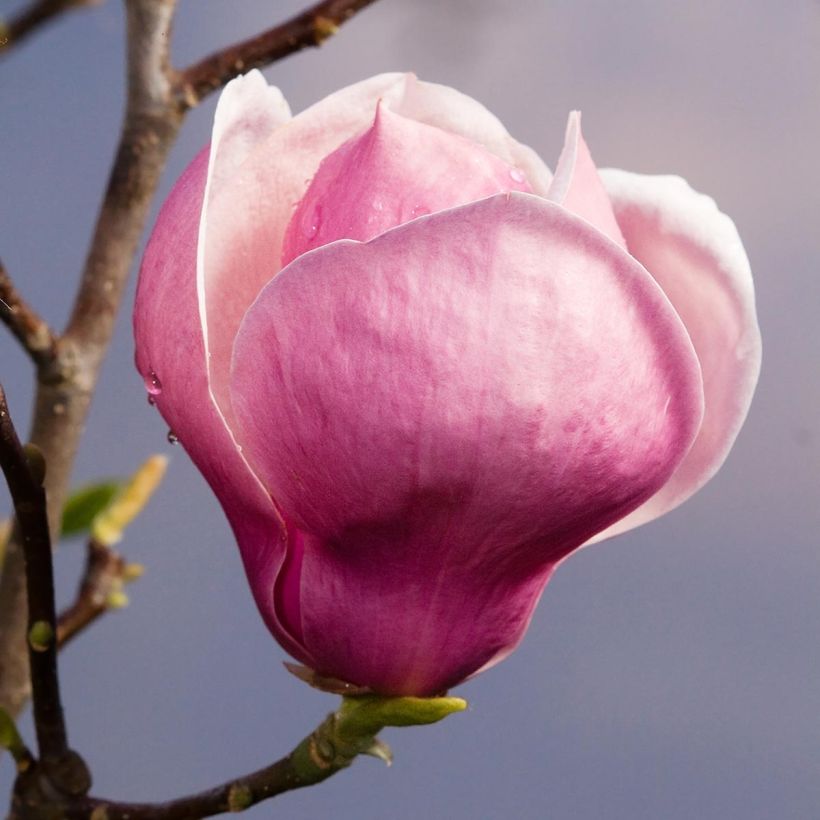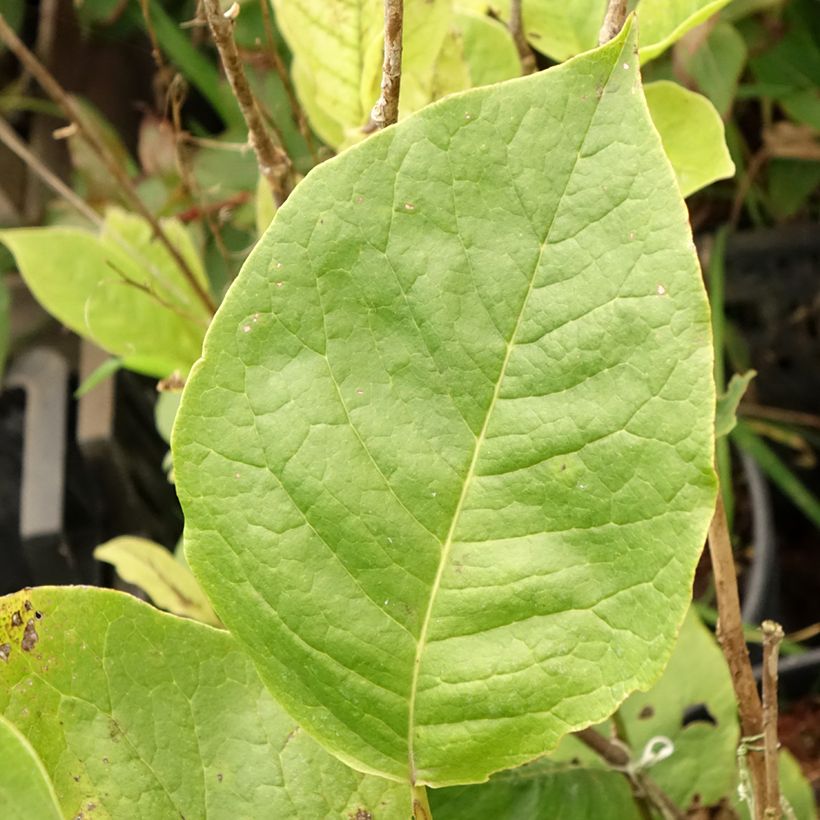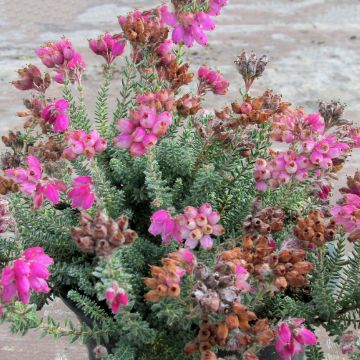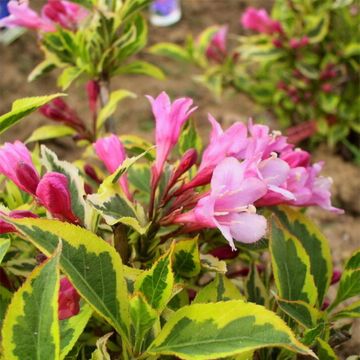

Magnolia soulangeana Lennei


Magnolia soulangeana Lennei


Magnolia soulangeana Lennei
Magnolia soulangeana Lennei
Magnolia x soulangeana Lennei
Magnolia
Special offer!
Receive a €20 voucher for any order over €90 (excluding delivery costs, credit notes, and plastic-free options)!
1- Add your favorite plants to your cart.
2- Once you have reached €90, confirm your order (you can even choose the delivery date!).
3- As soon as your order is shipped, you will receive an email containing your voucher code, valid for 3 months (90 days).
Your voucher is unique and can only be used once, for any order with a minimum value of €20, excluding delivery costs.
Can be combined with other current offers, non-divisible and non-refundable.
Why not try an alternative variety in stock?
View all →This plant carries a 24 months recovery warranty
More information
We guarantee the quality of our plants for a full growing cycle, and will replace at our expense any plant that fails to recover under normal climatic and planting conditions.
Would this plant suit my garden?
Set up your Plantfit profile →
Description
Magnolia x soulangeana 'Lennei' or Saucer Magnolia is a hybrid famous for its large, long-lasting two-toned spring flowers. From April to May, its large tulip-shaped flowers with fleshy dark pink to purple petals and pure white to pinkish-white centres appear on its beautiful bare framework, offering one of the most lavish and romantic displays of spring! It forms a large shrub or small tree often with several trunks dividing into large framework of branches with a beautifully spreading crown which makes it suitable for planting as a free-standing specimen or in beds. It will reach 5m (16ft 5 in) in height and spread when fully grown and is therefore best suited for medium to large gardens. A glade or light-woodland species, it is very easy to grow in full sun or partial shade in a sheltered location, in deep, rich, moist, well-drained, soil with little to no chalk. Despite its excellent hardiness, its flower buds remain sensitive to late frosts.
Magnolia x soulangeana 'Lennei' belongs to the Magnoliaceae family. It is a hybrid whose origins are unknown, resulting from a cross between Magnolia denudata and Magnolia liliflora, both native to Asia. The cultivar was named after the German botanist Peter Joseph Lenné, who discovered it in the mid-19th century in Lombardy, Italy. This fast-growing tree reaches 5 m (16 ft 5 in) in height and spread at maturity. It often has an upright to spreading habit with a well-balanced and beautifully branched structure, and it can also grow on multiple trunks. Its deciduous foliage consists of obovate, dark green leaves with a paler and finely-haired underside, turning yellow-brown in autumn, and measuring 10 to 15 cm (3.9 - 5.9 in) long. From April to May, depending on the area, before and after the leaves, large solitary and slightly fragrant, cup or tulip-shaped flowers appear, 15 cm (5.9 in) in length and width, ranging from dark pink to purple on the outside, and pale pink to white on the inside. These upright flowers open from buds protected by velvety bracts, and are composed of 9 waxy and thick tepals (indistinguishable sepals and petals) that open wide around a core of reddish-brown stamens. After flowering, brown cone-shaped fruits appear, containing red seeds. The Saucer Magnolia can live for over a hundred years. Along with its hybrids, it is one of the most widely planted Magnolias in parks and gardens throughout Europe.
Magnolia x soulangeana 'Lennei', an exceptional ornamental tree, will create just as much of a sensation in a medium-sized garden as it will in a vast park! It thrives in any good garden soil that is not too chalky. Be careful not to place other plants within 1.50m (4 in 11 ft) of the Magnolia's trunk, as its shallow roots do not tolerate competition. A real star at flowering time, it is most often used as a free-standing specimen in the middle of a lawn, near a bench, or at the entrance of a garden. The key is to choose a strategic location from which it can be admired from a window. It can also be used in a border of ericaceous shrubs (Rhododendrons, Camellias, Hydrangeas, Kalmia) for a Japanese-style garden.
Magnolias are ancient trees, with fossils dating back over 20 million years. Their magnificent flowering is considered one of the most primitive: their flowers are close to the earliest existing flowers in evolutionary terms. The bark of magnolias has medicinal properties and is used in cosmetics. Their wood is considered precious.
A bit of history:
Its name, Magnolia, was given to it in 1703 by Charles Plumier, botanist to King Louis XIV, paying tribute to the physician-botanist Pierre Magnol (1638-1715), who was one of the directors of the Montpellier Botanical Garden in the late 17th century. Its species name, soulangeana, originates from Etienne Soulange-Bodin (1774-1846), a retired cavalry officer in Napoleon's army who devoted himself to horticulture. At his château in Fromont near Paris, he became passionate about Magnolias and bred this hybrid in 1829, the origin of a magnificent lineage of cultivars today!
Report an error about the product description
Magnolia soulangeana Lennei in pictures






Plant habit
Flowering
Foliage
Botanical data
Magnolia
x soulangeana
Lennei
Magnoliaceae
Magnolia
Cultivar or hybrid
Other Shrubs A to Z
View all →Planting and care
The Magnolia x soulangeana 'Lennei' prefers sheltered, sunny to semi-shaded positions, in a deep, rich, moist to damp (but well-drained), humus-rich, neutral to acidic soil. It does well in clay soils that are not waterlogged, and even tolerates a small amount alkaline in the soil. It does not, however, tolerate poor, dry soils, nor windy locations. Although it is hardy (down to -20°C (-4°F)), it is essential to protect young plants from frost in the first years after planting. It should be noted that late frosts and cold winds can damage flower buds and young leaves, thus affecting flowering. Magnolias can be planted in spring or autumn, outside of frosty periods, taking care to protect them from cold winds. Prepare a hole 80 cm (31.5 in) wide and deep, with a good amount of ericaceous soil and compost. Take care to gently place the root ball in the hole, so as not to break the fleshy but fragile roots. Immediate watering with alkaline-free water (rainwater) helps to settle the soil around the roots. During the first year of planting, the Magnolia requires watering once a week. It will appreciate a soil amendment once a year in spring. When planting in chalky soil, it is advisable to replace your soil with peat, pine bark, leaf compost, and ericaceous soil. To help your tree establish, do not choose plants that are too tall (1.50 m (5 ft) is a good size). Staking may be necessary if the tree is a large specimen. Water generously in the first few years. The Magnolia does not tolerate prolonged drought, so the soil should kept slightly moist (but not waterlogged) throughout the summer. It is recommended to mulch around the base to keep it cool during the hot season. Enrich the soil, and protect it from the cold in winter. During the first few years, it can be pruned after flowering to shape its form. The tree is slow growing in the first few years after planting. After 4 to 5 years, it will be well-established, its growth will accelerate, and pruning will no longer be necessary, except to remove dead wood and rebalance its shape. Due to its fragile roots, transplanting should be avoided. The enemies of the Magnolia are parasites such as scale insects, snails, and slugs that attack young plants, and fungal diseases such as root rot (in excessively waterlogged soil), coral disease, and leaf blight (Pestalozzia). It should be noted that the Saucer Magnolia is one of the ornamental trees that tolerates air pollution best.
Planting period
Intended location
Care
This item has not been reviewed yet - be the first to leave a review about it.
Haven't found what you were looking for?
Hardiness is the lowest winter temperature a plant can endure without suffering serious damage or even dying. However, hardiness is affected by location (a sheltered area, such as a patio), protection (winter cover) and soil type (hardiness is improved by well-drained soil).

Photo Sharing Terms & Conditions
In order to encourage gardeners to interact and share their experiences, Promesse de fleurs offers various media enabling content to be uploaded onto its Site - in particular via the ‘Photo sharing’ module.
The User agrees to refrain from:
- Posting any content that is illegal, prejudicial, insulting, racist, inciteful to hatred, revisionist, contrary to public decency, that infringes on privacy or on the privacy rights of third parties, in particular the publicity rights of persons and goods, intellectual property rights, or the right to privacy.
- Submitting content on behalf of a third party;
- Impersonate the identity of a third party and/or publish any personal information about a third party;
In general, the User undertakes to refrain from any unethical behaviour.
All Content (in particular text, comments, files, images, photos, videos, creative works, etc.), which may be subject to property or intellectual property rights, image or other private rights, shall remain the property of the User, subject to the limited rights granted by the terms of the licence granted by Promesse de fleurs as stated below. Users are at liberty to publish or not to publish such Content on the Site, notably via the ‘Photo Sharing’ facility, and accept that this Content shall be made public and freely accessible, notably on the Internet.
Users further acknowledge, undertake to have ,and guarantee that they hold all necessary rights and permissions to publish such material on the Site, in particular with regard to the legislation in force pertaining to any privacy, property, intellectual property, image, or contractual rights, or rights of any other nature. By publishing such Content on the Site, Users acknowledge accepting full liability as publishers of the Content within the meaning of the law, and grant Promesse de fleurs, free of charge, an inclusive, worldwide licence for the said Content for the entire duration of its publication, including all reproduction, representation, up/downloading, displaying, performing, transmission, and storage rights.
Users also grant permission for their name to be linked to the Content and accept that this link may not always be made available.
By engaging in posting material, Users consent to their Content becoming automatically accessible on the Internet, in particular on other sites and/or blogs and/or web pages of the Promesse de fleurs site, including in particular social pages and the Promesse de fleurs catalogue.
Users may secure the removal of entrusted content free of charge by issuing a simple request via our contact form.
The flowering period indicated on our website applies to countries and regions located in USDA zone 8 (France, the United Kingdom, Ireland, the Netherlands, etc.)
It will vary according to where you live:
- In zones 9 to 10 (Italy, Spain, Greece, etc.), flowering will occur about 2 to 4 weeks earlier.
- In zones 6 to 7 (Germany, Poland, Slovenia, and lower mountainous regions), flowering will be delayed by 2 to 3 weeks.
- In zone 5 (Central Europe, Scandinavia), blooming will be delayed by 3 to 5 weeks.
In temperate climates, pruning of spring-flowering shrubs (forsythia, spireas, etc.) should be done just after flowering.
Pruning of summer-flowering shrubs (Indian Lilac, Perovskia, etc.) can be done in winter or spring.
In cold regions as well as with frost-sensitive plants, avoid pruning too early when severe frosts may still occur.
The planting period indicated on our website applies to countries and regions located in USDA zone 8 (France, United Kingdom, Ireland, Netherlands).
It will vary according to where you live:
- In Mediterranean zones (Marseille, Madrid, Milan, etc.), autumn and winter are the best planting periods.
- In continental zones (Strasbourg, Munich, Vienna, etc.), delay planting by 2 to 3 weeks in spring and bring it forward by 2 to 4 weeks in autumn.
- In mountainous regions (the Alps, Pyrenees, Carpathians, etc.), it is best to plant in late spring (May-June) or late summer (August-September).
The harvesting period indicated on our website applies to countries and regions in USDA zone 8 (France, England, Ireland, the Netherlands).
In colder areas (Scandinavia, Poland, Austria...) fruit and vegetable harvests are likely to be delayed by 3-4 weeks.
In warmer areas (Italy, Spain, Greece, etc.), harvesting will probably take place earlier, depending on weather conditions.
The sowing periods indicated on our website apply to countries and regions within USDA Zone 8 (France, UK, Ireland, Netherlands).
In colder areas (Scandinavia, Poland, Austria...), delay any outdoor sowing by 3-4 weeks, or sow under glass.
In warmer climes (Italy, Spain, Greece, etc.), bring outdoor sowing forward by a few weeks.




















































